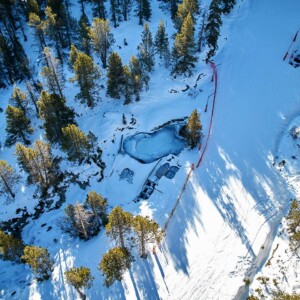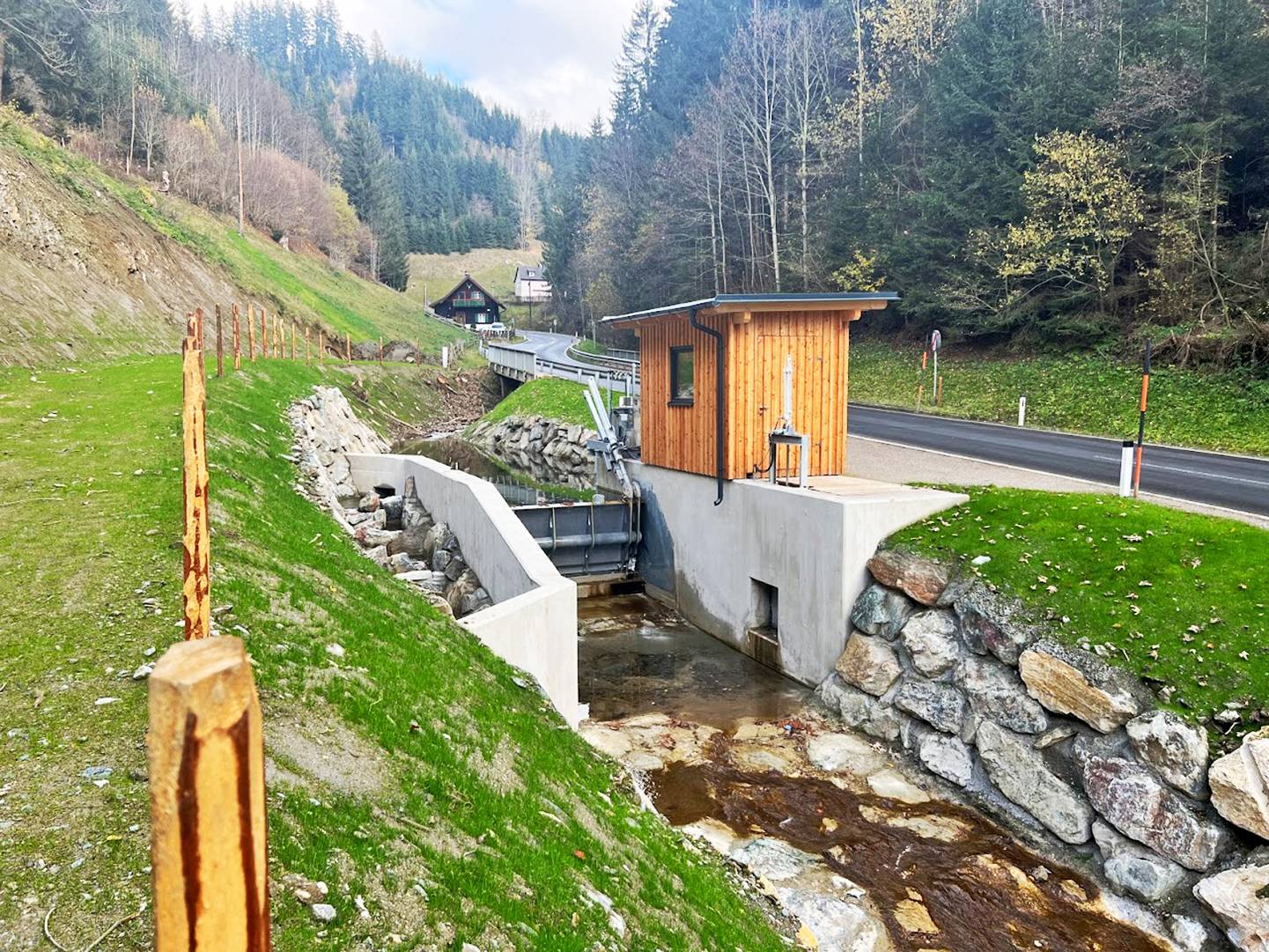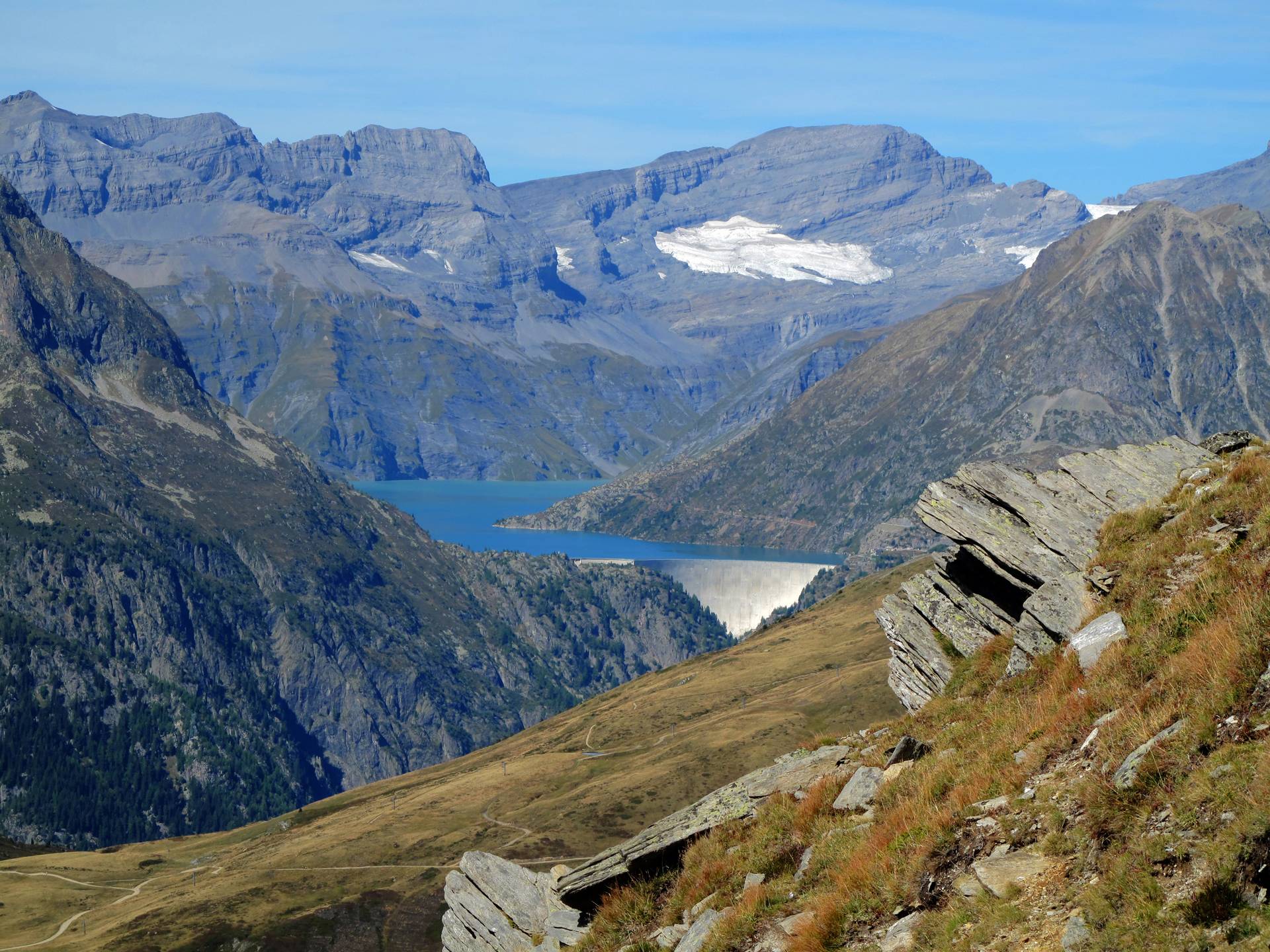Andorran ski resort achieves partial energy autarchy with new small-scale hydropower station6 min read
Lesedauer: 4 MinutenSince December 2022 the Grandvalira ski resort in the principality of Andorra has been utilising the hydropower potential of a mountain stream to generate clean energy. Within about six months, a new small-scale hydropower station was constructed on the Riu dels Pessons river in the resort’s Grau Roig sector. A water intake that had previously only served for the production of artificial snow was completely rebuilt to supply the required 450l/s of motive water. The entire electro-mechanical and secondary equipment for the power house was provided by Ossberger, a Germany-based specialist for small hydropower. To ensure reliable power generation, the operators opted for a crossflow turbine with a bottleneck capacity of 296kW, which utilises the varying water supply levels to achieve a maximum of efficiency. In a normal year, the new small-scale hydropower station generates around 500,000kWh of green electricity.
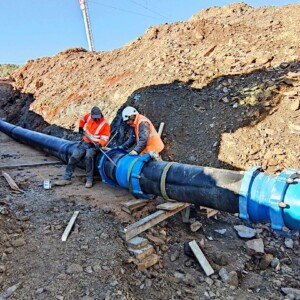
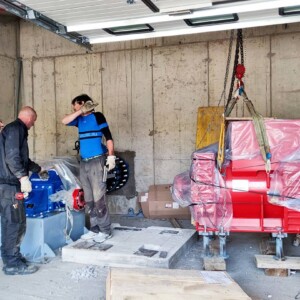
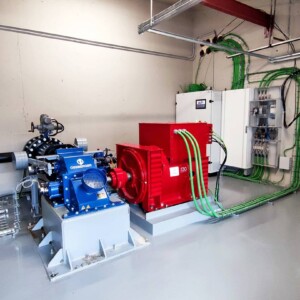
For the approximately 79,000 residents of Andorra, the principality between the borders of France and Spain, hydropower generation is of crucial importance. Almost a quarter of the electricity produced in Andorra is sourced from hydropower. Approximately an additional 15 per cent of the annual power requirement come from other renewable resources, such as wind, solar or biomass energy. One of the country’s most recently completed hydropower facilities went on line late last year in the ski resort of Grandvalira, one of the largest of its kind in the Pyrenees, providing around 200km of slopes.
Advancing towards energy autarchy
“As in any ski resort, energy is one of the largest cost factors in Grandvalira. And we expect the demand for energy to continue to rise in the foreseeable future. To promote local energy autonomy, Joan Viladomat, who owns Grandvalira’s associated ski areas of Pas de la Casa and Grau Roig, has been researching the possibilities of boosting the resort’s overall energy autarchy,” says Ferran Huertas Martínez, the Grandvalira resort’s deputy technical director. A study was conducted in 2020 to determine the hydropower potential and viability of energy production in the Grau Roig area. The energy source utilised by the new small-scale hydropower station is the region’s Riu dels Pessons mountain stream. Official planning permission for the site was granted already in autumn 2021. But with winter approaching fast it was clear that the project could not be completed that year, and so the kick-off was scheduled for the following summer.
Generating green electricity and artificial snow combined
The power station’s functional design is based on a classic diversion concept, where the motive water is removed from the stream at the intake and routed to the power house via a penstock. The water intake at Grau Roig is located at the site of a former weir gate structure about 2,200m above sea level, which had previously only served for making artificial snow. With the hydropower project the production of artificial snow and green energy are combined. The formerly unused hydroelectric potential of the altitude difference and the motive water serves now to drive the turbine in the power house. After that the water is routed to the existing pump station and is used for the production of artificial snow. Before work on the power station could begin, it was necessary to completely rebuild the water intake and put up the power house. To provide an ecologically compatible water passage at the intake, a fish ladder in the form of a technical vertical-slot pass was installed to allow aquatic wildlife to pass through to the headwater area. Another new construction was the 450mm dimensioned penstock with a length of 757m. Consisting exclusively of cast iron pipes, the power descent runs underground all the way, being routed in line with the penstock where possible. As Huertas explains, the high altitude posed a considerable challenge for the project’s engineers: “Obviously, having to work at altitudes of more than 2,000m in a secluded area can make things a bit difficult. Construction work began in June 2022. We knew from the start we couldn’t afford any delays, as work at the construction site would be impossible under snow conditions in winter. Fortunately, we didn’t encounter any significant problems like floods or difficult geological conditions.”
Crossflow turbine for a wide range of operating conditions
The electro-hydraulic components and automation equipment for the power house were provided by Germany-based all-round hydropower specialist Ossberger. The technology package from Ossberger was completed by the bypass including a plunger valve for the machine unit. Designed for head heights between 2.5 and 200m, the durable crossflow turbine is the facility’s core element. The machine is based on a simple design with only three movable parts. Its energy generating performance is highly reliable, as is its ability to cope with fluctuating water volumes. All this is made possible by the turbine’s internal design, which consists of two independently operated cells. As little as 5 per cent of the design flow rate is enough for the smaller cell to drive the turbine. For the Grau Roig power station, Ossberger provided a machine that is optimised for a design flow rate of 450l/s and a head of 96m. Especially in spring, when the snow is melting and the available water volume reaches its maximum level, the turbine can provide a bottleneck capacity of 296kW. A directly coupled synchronous generator transforms the runner’s kinetic energy into electricity. Like the turbine, the air-cooled generator rotates at 1,000rpm. The unit is designed for 400V and a rated apparent power of 306kVA. To complete its order, Ossberger also provided the entire electrotechnical and secondary equipment, which ensures the fully automated operation of the entire facility.
Resort leverages renewable energies
After about six months of construction, the picture-perfect hydropower station was finally taken into operation in mid-December 2022. However, it was only able to generate energy for a few days, as the available water volume fell considerably during the cold winter months. Three months later, in Mid-March 2023, the facility could be taken back on line. “So far we haven’t been able test the facility under full load, but we are very happy with what we’ve seen so far. The crossflow turbine by Ossberger is performing brilliantly, and it’s coping well with the fluctuating water supply at this site,” says Martínez. In normal years, the new green-power station is expected to generate about 500,000 kWh of clean energy. Thanks to the new hydropower station and multiple solar panels mounted on roofs throughout the region, the resort is now able to generate about 10 per cent of its required energy supply. As Huertas is pleased to mention, the ski resort is planning to increase its utilisation of sustainable energies, including water, wind, and solar power, in pursuit of its goal of full energy autarchy.
Share:

